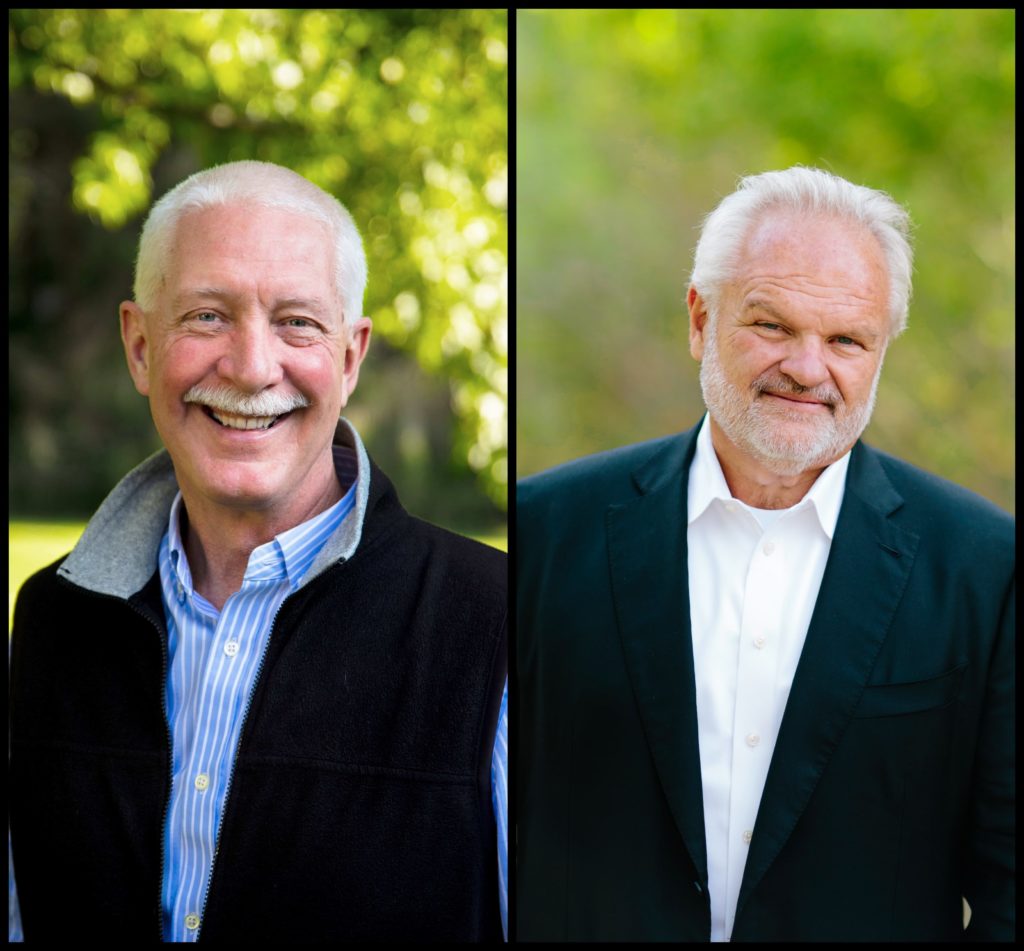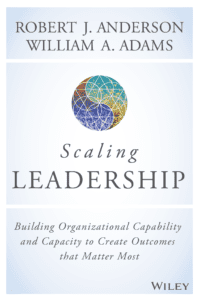Co-authors Robert J. Anderson and William A. Adams explore the characteristics needed to be an effective leader.
by Aysha Ashley Househ
January 25, 2019

There are different types of leadership, two of which are high-creative and high-reactive. Co-authors Robert J. Anderson and William A. Adams explore the difference between these two types of leadership. However, the advice doesn’t come from them, it comes from senior leaders.
After surveying more than one million leaders worldwide, the authors collected their research and shared their results in their new book, “Scaling Leadership: Building Organizational Capability and Capacity to Create Outcomes that Matter Most.” Chief Learning Officer editorial associate Aysha Ashley Househ spoke to Anderson and Adams about the difference between high-reactive and high-creative leadership and the surprising survey results.
CLO: What is unique about this book?
Anderson: We’ve heard forever that leadership is the most studied of subjects and the least understood. We don’t think that’s true anymore and we make a strong case for that in this book. We think leaders can describe effective leadership well. The book is senior leaders from around the world describing what works and what doesn’t.
Adams: What do senior leaders say about their peers? If you ask a senior leader, “Who’s the most effective leader you know and what makes him that way?” they’re clear about it. And when they give each other feedback they’re clear about it. For those working for a leader, they’re clear about what they need from leadership in order to succeed, get the results and strive.
CLO: What does an effective leader look like?
Adams: They must be confident and capable and understand what their business is about and what it takes to run that business or that organization. They clearly understand what’s required for that business to be successful and they put in place what’s required to make that happen — the expertise to be able to set directions, vision and strategy. All of those are things that a leader must do a good job of.
CLO: Can you describe the difference between high-reactive and high-creative leadership?
Adams: We have what we call the five stages of leadership — egocentric, reactive-ego, reactive-creative, integral and unitive. The majority of the adult population, around 70 percent, operate in reactive; somewhere around 25 percent operate in the creative; the additional 5 percent in integral and below that in egocentric. The biggest shift between reactive and creative is that reactive is being authored by those around us. In other words, I’m not OK unless you think I’m OK. So that’s an outside-in orientation.
The creative, on the other hand, is the inside orientation. What’s most important and I’m making decisions and operating off that sense of knowing what’s both valued and important individually and what’s most important to the business I’m responsible for. And we’re less concerned by whether we’re OK in everyone else’s eyes. We’re more concerned about what’s the best interest for the entire organization. The truth is, for a significant portion of people, we don’t make that  shift into creative leadership unless we choose to and get ourselves on the developmental path. The leaders in the creative operate multiple times more effective.
shift into creative leadership unless we choose to and get ourselves on the developmental path. The leaders in the creative operate multiple times more effective.
Anderson: A [reactive] leadership is: I’m trying to forward my objectives, but I’m functioning out of how not to lose, how not to look bad, how to maintain my credibility. Or when I’m under stress and pressure I default to my strategy – I either go away in caution or do the opposite and take over and get controlling. So reactive leadership shows up highly correlated with ineffectiveness. We won’t create the type of agile, innovative organization from a reactive mindset.
You see it in the comment data, they’re [high-creative leaders] authentic, they walk the talk, they’re transparent. When we work with leaders who successfully transform their organization by scaling leadership starting with themselves, and then to their team and then the organization, they do it vulnerably. They’re open about their need to learn, they ask for help, they get feedback, they encourage the same with others, they move away from this notion that they need to know it all.
Adams: Bob and I were working with a leadership team and out of Bob’s mouth came, “I’ve become perfectly OK with knowing I’m going to die an imperfect human being.” To understand that radically human component, which we all are part of, and this trying to be perfect and act like we have no flaws or try to act like we don’t make mistakes, all of that puts up a barrier between us and those we lead in a way that doesn’t make us human. And these good leaders set a condition where who we are as human beings is not only important for business results, it makes up the magnificence of who we are as human beings. We can be honest, open and vulnerable with each other and we create a culture where being human is not only OK, it’s actually just exactly what it needs to be and it’s the best for building organizations that produce results.
CLO: What surprised you with the results of the survey?
Adams: When leaders talk about other leaders, they spend time and attention on how effective they are in relationships. So, can they be in relationship with one-on-one, one-on-team and one-on-organization or X-scale? Can a leader or a group of leaders be in a relationship where people feel like they’re part of a team and valued?
Anderson: These are the top 10 commented-upon strengths by leaders describing effective leadership: strong people skills, visionary, team builder, personable and approachable, leads by example, passionate and driven, good listener, develops people, empowers people and positive attitude. The predominance of people skills in that list surprised us. It’s about how you create agile, engaged, innovative, adaptive organizations. It requires to scale that kind of leadership throughout the organization.
Another big surprise for us is when we looked at the list of top strengths described by what we call reactive leaders, which is highly correlated with ineffective leaders. It isn’t that they’re not making a contribution. They may actually be making a huge contribution, but the list of strengths are technical, intellectual, creative genius, brilliant, domain knowledge. They’re leading from their own brilliance and their own capability. And what you don’t see on their list are the things I just mentioned [people skills]. These are equally talented groups of people in our sample, but being experienced differently as leaders. We ended up calling those “non-differentiating strengths.” If you don’t have them you don’t play; they’re essential. But they don’t differentiate the best from the worst leaders. That was a big surprise how clear leaders are about needing these things, but they’re not what defines great leadership.
CLO: How can leadership be scaled?
Adams: I’ve got to be willing and committed as a leader to develop myself, to increase my level of self- awareness. Once I’ve started that process, the same thing applies on a team basis. How do I get the entire team to work effectively — going from self to team? How do we do the same things for our organization as a whole? It’s easy to say and hard to do. We wanted to quantitatively show that if you’re a more effective leader, the better your results are going to be.
CLO: What do you want people to take away from the book?
Anderson: It’s relentless what keeps coming at the reader to say there’s a more effective way to lead. And if you’re not on a journey toward that, you’re going to be outmatched by the complexity you’re in, if you’re not already. There’s a paradox in the book between the relentlessness of and fierceness of, this doesn’t work, and this does work. Development is a natural need and we’re all over our heads in the face of emerging complexities.
Adams: What leaders are capable of developmentally is far beyond what they thought. And when that leader takes on that development for himself or herself and for their organization, what can come out of that is far and above what we thought was possible. We now have more information than we ever had that we can capitalize on, so the potential for an organization and the impact it can have on the universe and the good for the world is way beyond what we thought.
Between Bob and I, we’ve got 126 years between us on the planet, we’ve been in this business forever and we both refer to each other as two old warhorses. We’re sitting in a world that desperately needs great leaders. We know that the influence for what needs to happen across the globe can happen within organizations and businesses from great leadership. We see the work that we do and the work of businesses and organizations is having greater purpose. And we want that to happen, that’s why we’re in what we’re doing now. And we’re far from finished, we’re just getting started.



